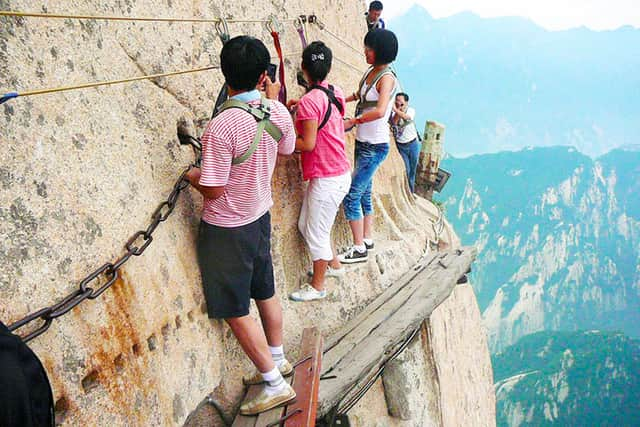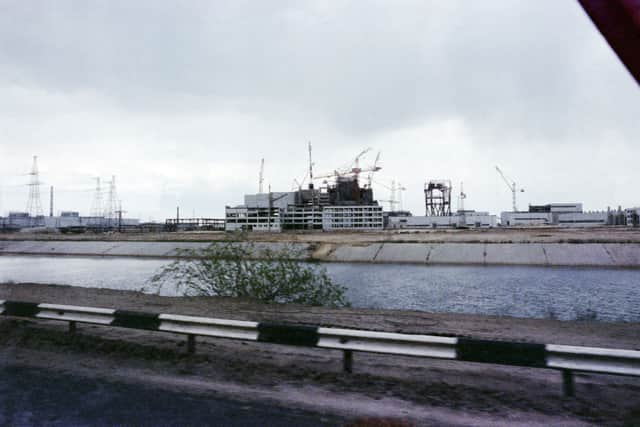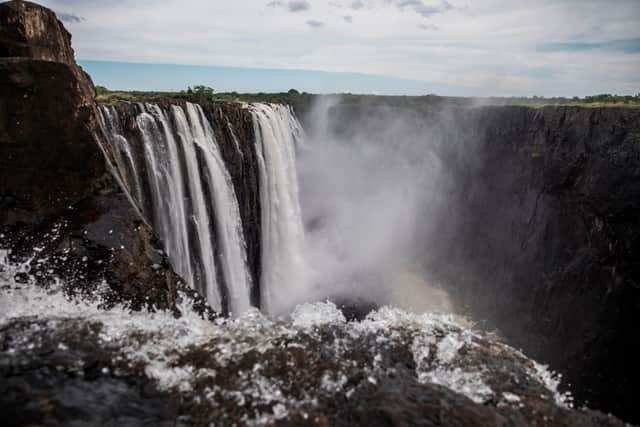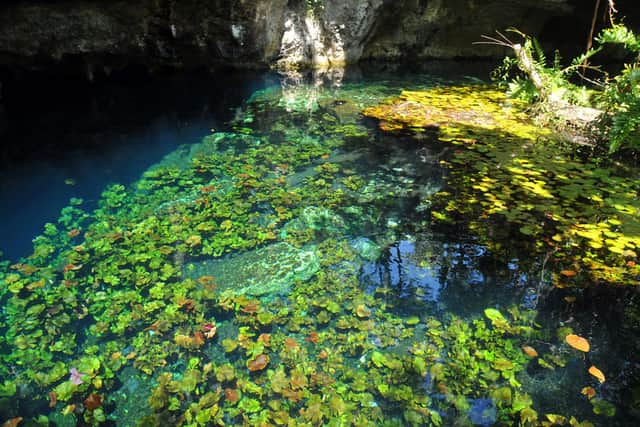Titan sub; What is extreme tourism and what other locations are considered part of the trend?
People in this article
and live on Freeview channel 276
Questions surrounding the implosion of the Titan submersible continue today, after the admission that all five members inside the vessel, on its way to the wreckage of the RMS Titanic, are presumed dead by the U.S Coast Guard. One of the questions that continues to be asked is the price of such a risky, commercial venture and why anyone would want to risk their life for a perceived “luxury”.
But it isn’t just the rich that embark on this treacherous forms of tourism; extreme tourism, sometimes known as “dark tourism,” isn’t just for the affluent and instead has become a growing form of holidaying by taking part in riskier activities, either for genuine interest in the areas involved or to have an incredible holiday story to tell friends.
Advertisement
Hide AdAdvertisement
Hide AdMany would argue that one of the most well known forms of extreme tourism would be trips to the summit of Mt. Everest, which former Explorers Club member Sir Edmund Hillary made famous, became the first man to reach the summit alongside his travel companion Sherpa Tenzing. These days however, there is a growing feeling that the tourist trap of Mt. Everest diminishes the actual hazards such a trip possesses; tales of those who have made the climb themselves have at times mentioned the macabre bodies of those who did not make it to the top, but those bodies were so far from the bottom a recovery attempt seems nigh on impossible.. Or worse, pointless…
There is also the romanticised idea of space travel, made popular by Sir Richard Branson’s “Virgin Galactic” endeavours or Amazon CEO Jeff Bezos and his Blue Origin project. Though the idea of seeing the world below from the (near) reaches of outer space sounds great, there is also the very real risk of a problem at lift off, making the actual flight itself one that is indeed perilous.
So while there are some out there who are asking why on earth five men would risk their lives to see something that could have been seen remotely above water, PeopleWorld would like to suggest some other raised eyebrows for other forms of extreme tourism available.
What are other forms of extreme tourism that currently exist?
Huashan Plank Walk - China


The Huashan Plank Walk, also known as the Huashan Trail or Huashan Cliffside Path, is a thrilling and treacherous hiking trail located on Mount Huashan in Shaanxi Province, China. It is considered one of the most dangerous and exhilarating hikes in the world, attracting adventurous hikers and thrill-seekers from around the globe.
Advertisement
Hide AdAdvertisement
Hide AdThe trail is characterised by narrow wooden planks bolted to the sheer cliffs of Mount Huashan, suspended thousands of feet above the ground. Hikers traverse the planks while clinging to chains for support, carefully manoeuvring their way along the exposed cliff edges. The trail offers breathtaking views of the surrounding mountains and valleys, adding to the adrenaline-inducing experience.
Chernobyl Tours - Ukraine


Though since the occupation of Russian forces in the Ukraine has put a stop to these tours, one only has to search “Chernobyl Tours” in Google to see a number of travel operators that provide these kinds of extreme tourism. Lupine Travel, for example, offered daily package tours to the Chernobyl zone and parts of Pripyat - ensuring that the levels of radiation on their routes is no more stronger than that found at an airport X-Ray machine.
Other areas that are off limits, however, may not have the same “safe” amounts of radiation, meaning that there is always a risk that should another operator set up a different route, playing fast and loose around the area of travel is much more treacherous
The Devil’s Pool - Zimbabwe


The Devil's Pool is a natural rock pool located at the edge of Victoria Falls in Zimbabwe. It is a popular tourist attraction known for its unique and thrilling experience. During the dry season, when the water levels of the Zambezi River recede, a natural rock barrier forms a shallow pool on the lip of the falls.
Advertisement
Hide AdAdvertisement
Hide AdWhat makes swimming the idyllic area dangerous however is the unpredictable nature of the pool itself; it’s not called “The Devil’s Pool” without good reason. Strong and unpredictable currents in the Zambezi River, slippery rocks due to constant mist, the proximity to the edge of Victoria Falls, potential encounters with wildlife and changing weather conditions make a trip to an infinite pool in the hotel a little less stressful.
Sistema Sac Actun - Mexico


Sistema Sac Actun, located in the Riviera Maya, Mexico, holds the distinction of being the longest underwater cave system known to date, spanning an incredible distance of 350 kilometres. With an average depth of 21 metres and a maximum depth of 120 metres, this submerged labyrinth presents a unique and awe-inspiring exploration opportunity.
However, it's essential to acknowledge the potential risks associated with such an endeavour. Over time, the cave system has experienced numerous roof collapses, creating hundreds of cenotes (natural sinkholes). While exploring these cenotes can be relatively safe, venturing deeper into the cave system without professional guidance can pose significant dangers.
The unstable nature of the cave's structure increases the risk of further collapses, making it crucial for visitors to exercise caution and prioritise their safety when embarking on any underwater exploration in Sistema Sac Actun
Comment Guidelines
National World encourages reader discussion on our stories. User feedback, insights and back-and-forth exchanges add a rich layer of context to reporting. Please review our Community Guidelines before commenting.
